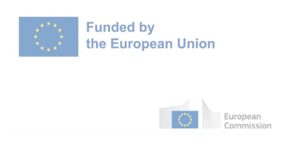BIVALVE AQUACULTURE: EXPLORING ENVIRONMENTAL BENEFITS, GROWTH POTENTIAL AND CHALLENGES IN THE EU
Background
Bivalve aquaculture has been identified as a key sector for the sustainable growth of aquaculture in Europe. However, the reported benefits of bivalve aquaculture for the environment and potential environmental risks have not been well-defined or quantified, and the risk-benefit trade-off remains unclear.
Methodology and aims
Firstly, the study aims to detail the positive contributions of bivalve aquaculture in the EU in addressing biodiversity loss, pollution, and climate change (including mitigation efforts), while also considering any possible negative impacts on ecosystems through a systematic literature review. Secondly, a consultation with bivalve aquaculture stakeholders (across several MS) was conducted to develop a SWOT analysis of the current environmental, economic, social, regulatory/institutional, and technological aspects. This analysis seeks to identify opportunities for growth of the bivalve aquaculture by implementing the identified environmental benefits and considering the impacts, focusing on the challenges and opportunities in promoting the benefits of bivalve aquaculture.
The literature review analysis was based on a systematic literature review (SLR) following PSALSAR (Protocol and Reporting result with Search, Appraisal, Synthesis, and Analysis Framework) . The project aimed to answer questions regarding the relationship between the bivalve farming sector with key environmental aspects, focusing on the benefits related to biodiversity, pollution and climate change, but also identifying the challenges . Web of Science, Scopus and Google Scholar databases were used. The search was restricted to research items published between 2014 and 2024 , using keyword search strings such as “aquaculture AND bivalve”, “farming AND bivalve”, “aquaculture OR farming AND bivalve” and “aquaculture OR farming AND bivalve AND environmental AND benefits” and combinations with “Biodiversity”, “Pollution” and “Climate Change”.
Preliminary results
In total, 112 items were selected and a fter the full text review, 41 research items were finally selected as relevant for this study. These papers were reviewed and summarised as part of the report in order to assess the ecosystem services and related environmental benefits of the bivalve sector. Data collected through the stakeholder consultation was reviewed and critically assessed, and further insights were extracted.
Conclusion & Outlook
This study falls under a broader study requested by the European Commission on Assessing the environmental benefits of aquaculture and challenges and opportunities in promoting those benefits . The abstract and presentation focuses on the contextual background and project methodological approach, and presentation of results to inform the current state of knowledge of the environmental benefits of bivalve mollusc farming , outlining possible opportunities for development of this type of farming as a low impact type of aquaculture .
